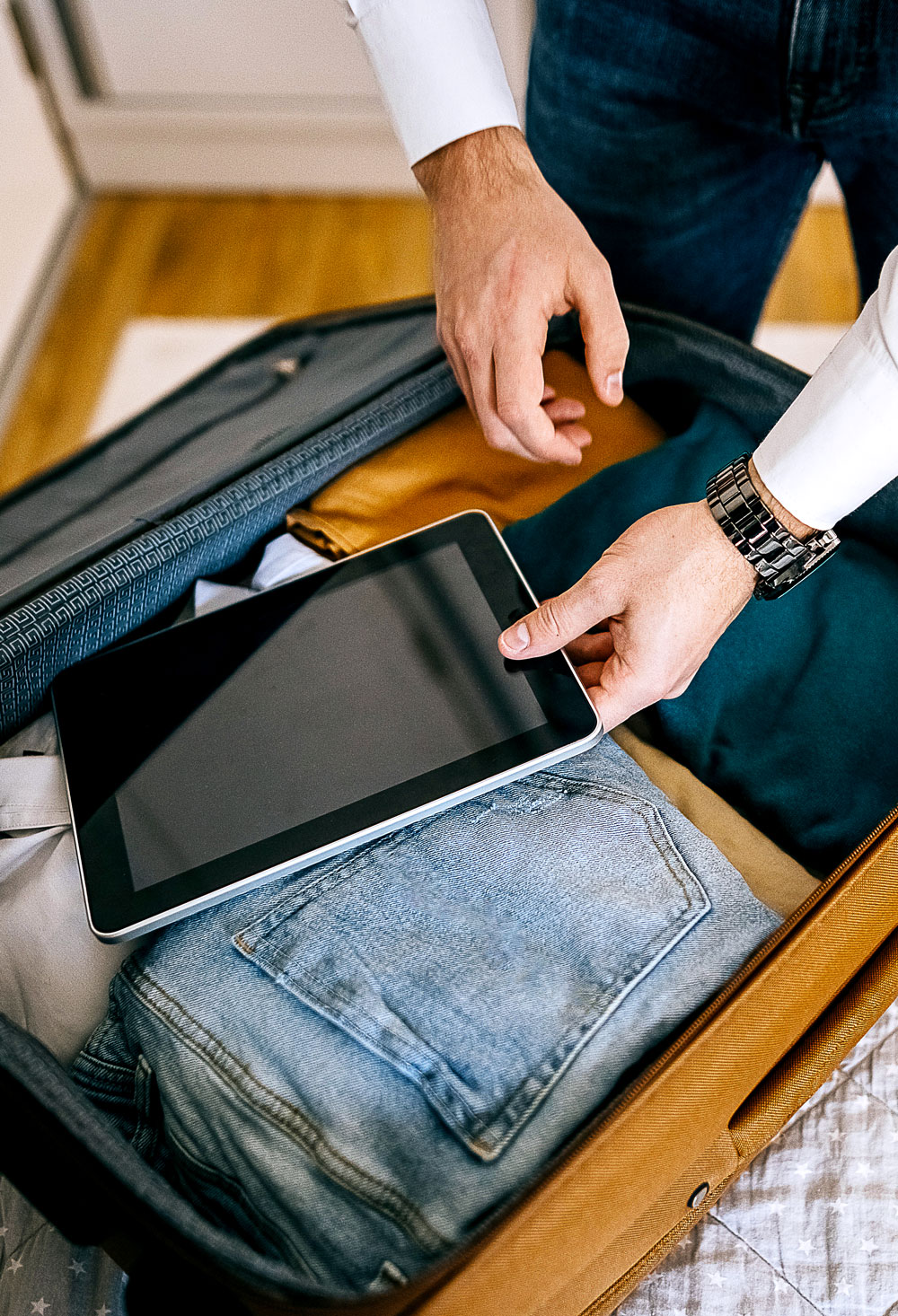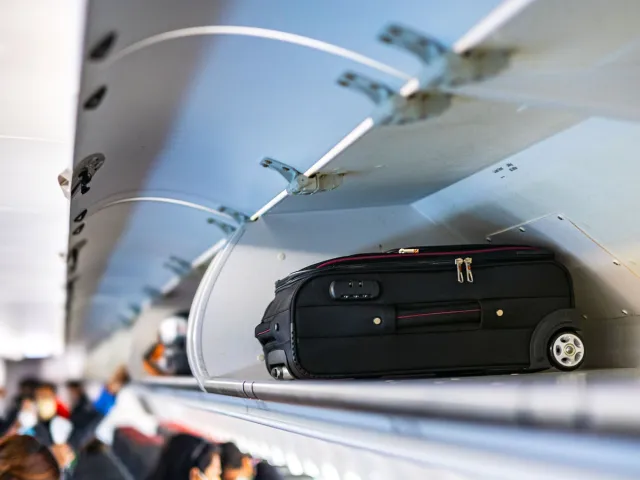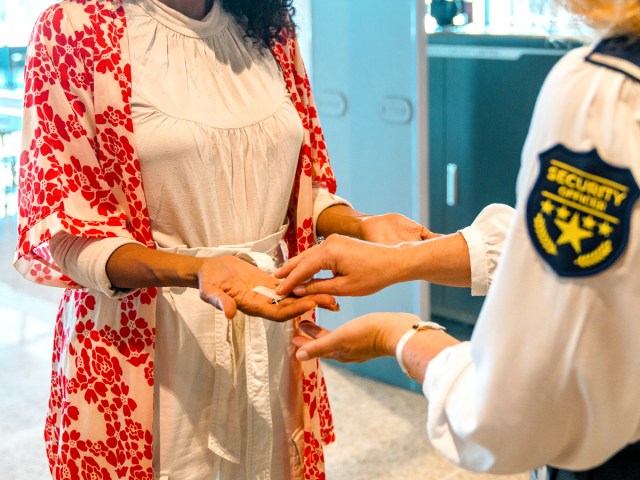If you’re heading out on vacation this summer, you’ll want to pack carefully. Earlier this year, the Transportation Security Administration (TSA) announced a ban on several common items that are no longer allowed in checked bags. Find out more about the TSA’s new policy and why it was implemented — along with other packing tips to help you speed through airport security.
A Ban on Lithium-Ion Batteries
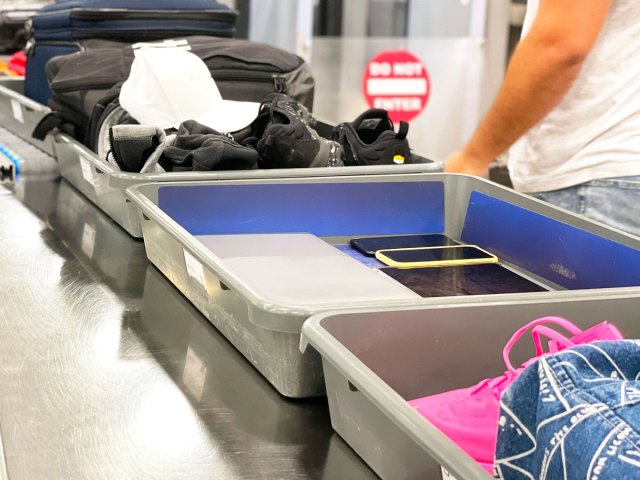
A lithium-ion battery is a type of rechargeable battery that is commonly used in personal tech devices such as cellphones and laptops. As of March 1, 2025, new TSA rules prohibit passengers from packing portable chargers, power banks, and cellphone battery charging cases that contain lithium-ion batteries in checked luggage. This rule also applies to spare external lithium batteries.
That means you must now pack your laptop charger in your carry-on, not a checked bag. While personal electronic devices that contain such batteries — e.g., laptops, tablets, cellphones — are still permitted in checked bags as long as they are powered off, the TSA recommends that they be carried on board with you.
Why is the TSA restricting these items? The move follows a string of recent incidents in which devices containing lithium batteries have overheated on commercial aircraft, including one that caused a fire and forced an evacuation of an Air Busan aircraft in South Korea in January 2025. According to the FAA and an analysis by CBS News, there was a 42% rise in incidents concerning lithium batteries between 2018 and 2023.
“All lithium ion batteries are capable of overheating and undergoing a process called thermal runaway,” the FAA states on its website. “Thermal runaway can occur without warning as a result of various factors, including if the battery is damaged, overheated, exposed to water, overcharged, or improperly packed. Thermal runaway can also occur on its own due to manufacturing defects.”
Such fires would be difficult to extinguish if they were to happen in the cargo hold, but the TSA says that flight crews are trained to respond to lithium battery fires in the cabin and that “passengers should notify flight crew immediately if their lithium battery or device is overheating, expanding, smoking, or burning.” For more information on lithium battery size and quantity limits, check out the FAA’s PackSafe guide.
Other Items Not Permitted by the TSA
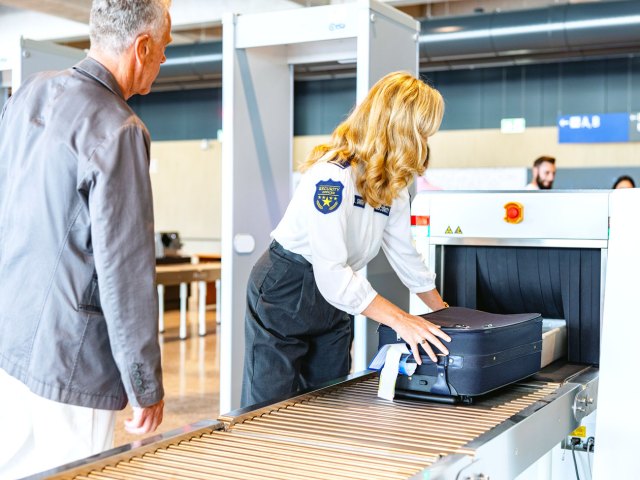
While power banks and portable chargers are the latest items to be banned, they’re far from the only products on the TSA’s list. In fact, the organization lists nearly 500 items that are either prohibited entirely or restricted to only carry-on or checked luggage.
If you plan to bring anything unusual on your trip — say, bear spray, tent spikes, or even bowling pins — you’re bound to find it on the TSA’s “What Can I Bring?” page or the similar feature in the MyTSA app. Be sure to consult the agency’s helpful guide before heading to the airport, so you don’t risk running into any security delays and possibly missing your flight — you might find that some of the items banned by the TSA will surprise you.
Don’t Forget Your REAL ID

During the busy summer travel season, travelers should also be aware of another important change that went into effect at airport security checkpoints this year: REAL ID. As of May 7, 2025, airline passengers will need a REAL ID-compliant form of identification to board any domestic flight in the United States — a standard driver’s license will no longer cut it.
You can tell if you have a REAL ID by a star or flag symbol (or both), along with the label “Enhanced.” It contains security features that make the document more difficult to counterfeit. If you don’t have one, make an appointment with your local DMV before traveling, and in the meantime, you can always use a passport instead.
Featured image credit: StefaNikolic/ E+ via Getty Images
More from our network
Daily Passport is part of Inbox Studio, which publishes content that uplifts, informs, and inspires.






